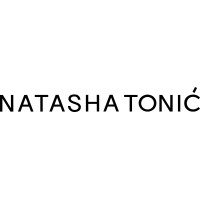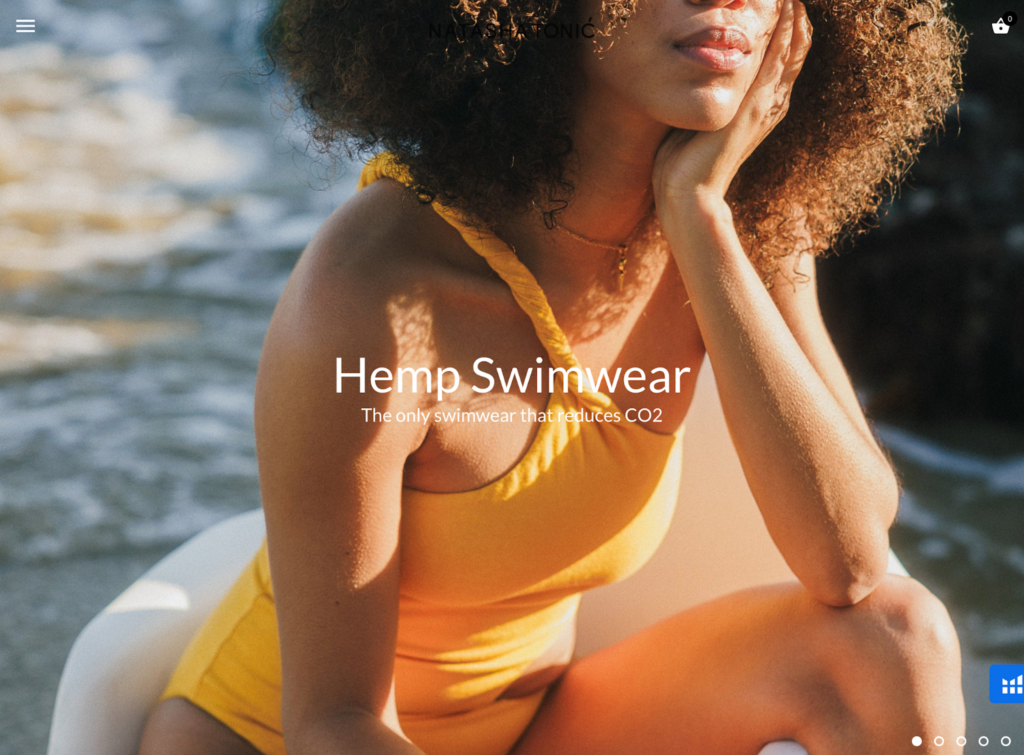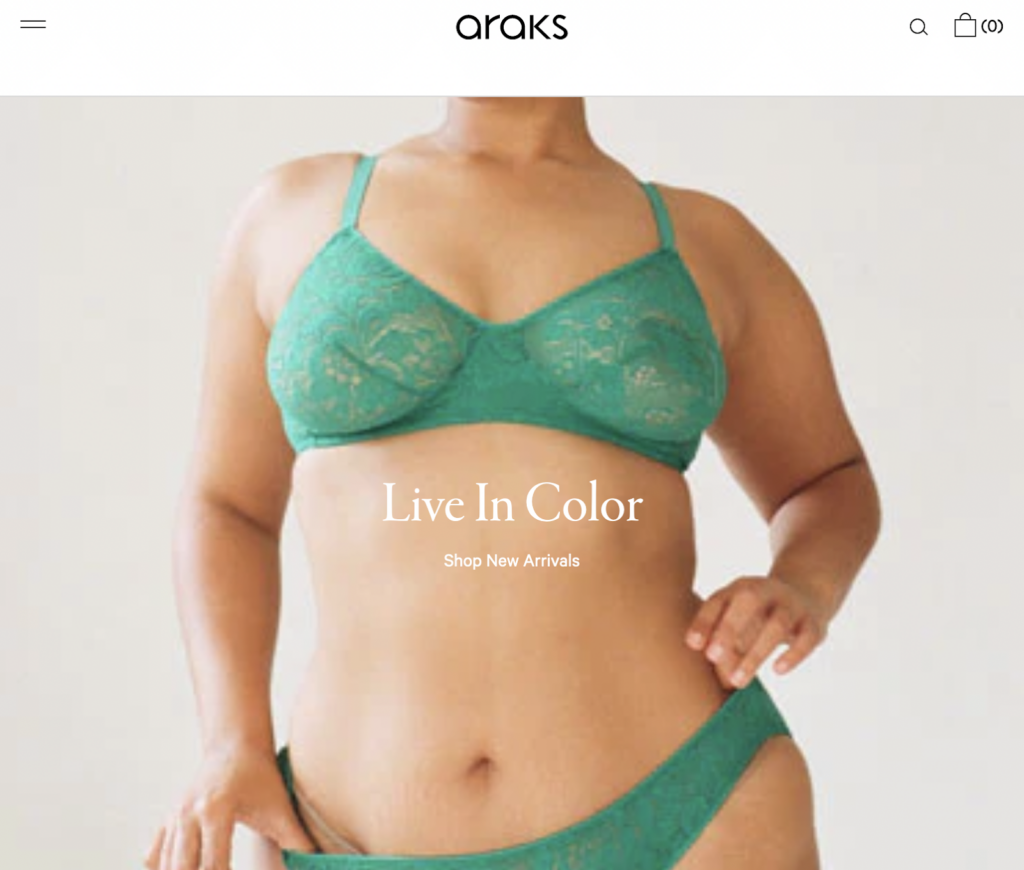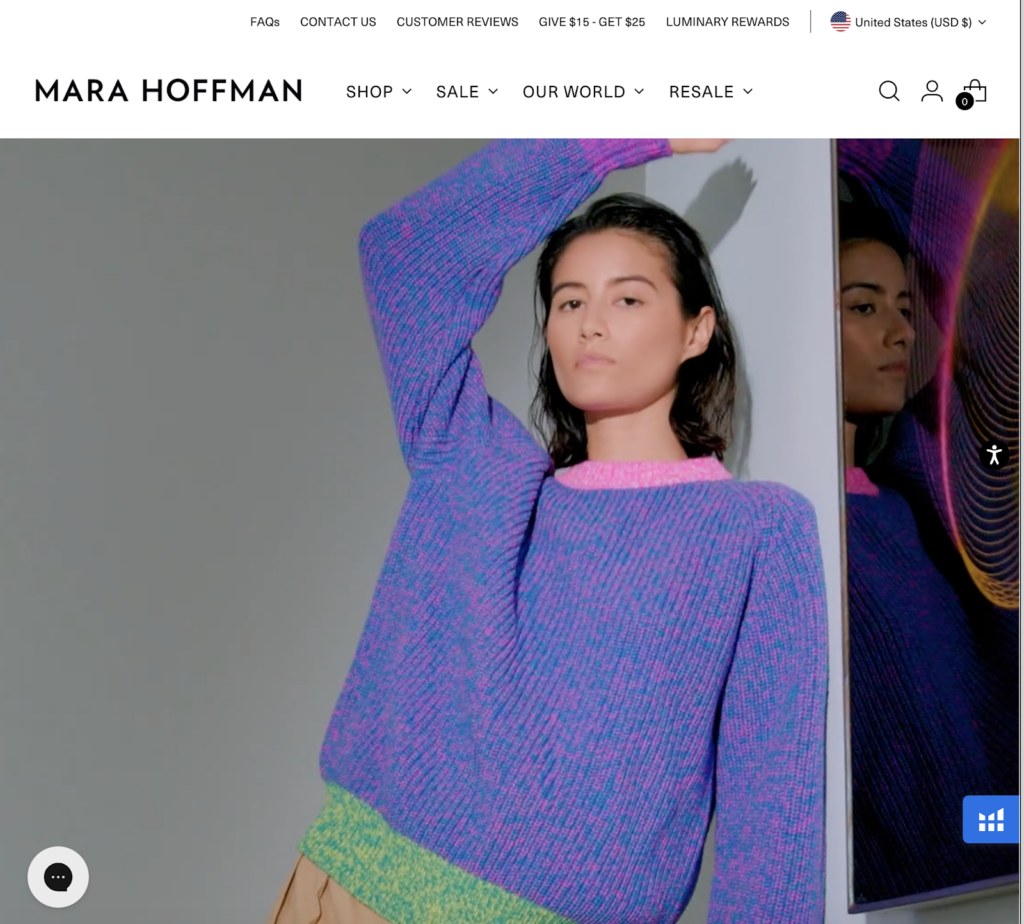9 Most Sustainable Swimwear Brands: The Conscious Consumer’s Guide
Affiliate Disclosure
Hey fellow impactful ninja ?
You may have noticed that Impactful Ninja is all about providing helpful information to make a positive impact on the world and society. And that we love to link back to where we found all the information for each of our posts.
Most of these links are informational-based for you to check out their primary sources with one click.
But some of these links are so-called "affiliate links" to products that we recommend.
Why do we add these product links?
First and foremost, because we believe that they add value to you. For example, when we wrote a post about the environmental impact of long showers, we came across an EPA recommendation to use WaterSense showerheads. So we linked to where you can find them. Or, for many of our posts, we also link to our favorite books on that topic so that you can get a much more holistic overview than one single blog post could provide.
And when there is an affiliate program for these products, we sign up for it. For example, as Amazon Associates, we earn from qualifying purchases.
What do these affiliate links mean for you?
First, and most importantly, we still only recommend products that we believe add value for you.
When you buy something through one of our affiliate links, we may earn a small commission - but at no additional costs to you.
And when you buy something through a link that is not an affiliate link, we won’t receive any commission but we’ll still be happy to have helped you.
What do these affiliate links mean for us?
When we find products that we believe add value to you and the seller has an affiliate program, we sign up for it.
When you buy something through one of our affiliate links, we may earn a small commission (at no extra costs to you).
And at this point in time, all money is reinvested in sharing the most helpful content with you. This includes all operating costs for running this site and the content creation itself.
What does this mean for me personally?
You may have noticed by the way Impactful Ninja is operated that money is not the driving factor behind it. It is a passion project of mine and I love to share helpful information with you to make a positive impact on the world and society. However, it's a project in that I invest a lot of time and also quite some money.
Eventually, my dream is to one day turn this passion project into my full-time job and provide even more helpful information. But that's still a long time to go.
Stay impactful,
Amid growing concerns about the textile industry’s environmental impact, there is pressure to find greener clothes for your wardrobe, from winter coats to summer swimwear. Unfortunately, fashion greenwashing makes it harder for you and all other consumers to figure out which clothing brands offer the most eco-friendly garments. So, we had to ask: Which are the most sustainable swimwear brands?
The most sustainable sock brands are NATASHA TONIC, VITAMIN A, and Elle Evans, which prioritize low-impact renewable materials, reduce waste, and strive for circularity. In addition, Londre Bodywear and lemlem reduce carbon emissions and commit to giving back.
Whether you are searching for the perfect bikini or a high-performing one-piece to add to your wardrobe without negatively impacting the soil, the water, the animals, and other people, there is a brand for you. So, let’s keep reading to learn more about the most sustainable swimwear brands and how they ensure sustainable, ethical practices.
Here’s How We Selected the Most Sustainable Swimwear Brands
Swimwear can be one of the higher impact and less sustainable clothing items you own because the high performance requirement is often better met by using synthetic fabrics, which don’t biodegrade and release microplastics while using and washing.
“Sustainable: The ability to be maintained at a certain rate or level | Avoidance of the depletion of natural resources in order to maintain an ecological balance”
Oxford Dictionary
The brands on this list were chosen based on their commitment and actions to promote sustainable practices while reducing the environmental impacts of the textile industry.
They are transparent about their materials, processes, and workforce management within their supply chain.
Some brands focus their efforts on reducing waste and optimizing natural resources while others strive to reduce the carbon footprint of their clothes.
All of these brands share the commitment to reshape the textile industry toward a more sustainable and Earth-friendly sector.
These Are the 9 Most Sustainable Swimwear Brands
Most Sustainable Swimwear Brands
Overall, these swimwear brands are sustainable. Yet, they take various approaches to reduce environmental impacts and uphold ethical standards. Let’s dive into each brand and find out more.
NATASHA TONIC: Making Plant-Based Swimwear to Reduce Microplastic Pollution


“We make everything locally in small batches to make sure we don’t have a negative impact on the environment.”
NATASHA TONIC
🌎
How do they ensure their sustainability?
NATASHA TONIC prioritizes sustainability through eco-friendly materials, low-impact processes, and low-footprint practices. They use a high proportion of sustainable natural fabrics, including hemp and certified organic cotton, and only low-impact, non-toxic dyes that contain soluble natural components and no heavy metals. Furthermore, NATASHA TONIC lowers the manufacturing impact by applying on-site heat reclamation, on-site water filtration, and no-salt-added dye baths in their dyeing processes and using biopolishing in their finishing treatments. Additionally, they reduce their transporting carbon footprint by purchasing fabrics locally in the US and using electric vehicles for delivering between suppliers and studios.
🌐
How do they ensure their ethics?
NATASHA TONIC puts protecting workers and nature at the core of their operations. As such, they trace most of their supply chain, including all of the second and final stages of production. Their second stage of production is audited by the Fair Wear Foundation. Workers at their US factory are all paid according to California standards. NATASHA TONIC also protects nature by eliminating contaminants in surface runoff to maintain the surface and groundwater quality and replacing insecticides with natural pest-controlling methods.
🤝
Are they part of any giving-back programs?
NATASHA TONIC donates 5% of every swimsuit sold to 5 Gyres to support fighting plastic and microfibre pollution. Additionally, they contribute to the cause of social movements, including Tree People, Black Lives Matter, and Downtown Women’s Center.
🛍️
What is their product range?
- Best for: womenswear
- Product range: swimwear, tops, blouses, bodysuits, lingerie
- Price range: $$$
- Size range: XS–XL
Vitamin A: Swimwear and Beachwear Made Sustainably With Recycled Nylon


“We focus on the intersection of flawless fit, high quality, continuous innovation, and elegant designs… Every one of our pieces is designed by women, for women.”
Amahlia Stevens, founder of Vitamin A
🌎
How do they ensure their sustainability?
Vitamin A ensures their sustainability by sourcing recycled synthetic materials for their products and manufacturing them locally using low-impact technologies. They use recycled nylon in place of virgin nylon to create fabric blends for their bikinis, swimsuits, and beachwear lines, saving 77% water usage. The brand also incorporates sustainable natural fabrics and high-performing plant-based textiles into their products, including GOTS-certified organic cotton, linen, recycled cotton, and TENCEL™. All materials used by Vitamin A are certified to meet the global OEKO-TEX® STANDARD 100 for safe textiles. On top of that, the majority of their swimwear is crafted locally in Californian vertically integrated facilities (and the rest in the US), reducing the transporting carbon footprint. Regarding production, they use mostly digital printing, which requires less water and creates less fabric waste than traditional wet printing. Other measures used at their headquarters and warehouse to reduce their environmental footprint include all paper products made with 100% recycled post-consumer waste, no disposable plastic water bottles, a heat reclamation system, and working-from-home support to avoid unnecessary travel.
🌐
How do they ensure their ethics?
Vitamin A ensures their ethical and responsible production by keeping production locally in California, which has the strictest environmental laws in the nation. They also visit their factories regularly to ensure employees are being treated and paid fairly and that the working conditions are clean and safe.
🤝
Are they part of any giving-back programs?
Vitamin A is a proud member of 1% for the Planet. They give back to organizations that work to protect the oceans. Additionally, they host beach cleanups.
🛍️
What is their product range?
- Best for: womenswear
- Product range: swim tops, swim bottoms, beach tops, beach bottoms, one-pieces, dresses, rompers, shirts, pants, overalls, hoodies, shorts, accessories
- Price range: $$
- Size range: XS–XXL
Elle Evans: Swimwear Made to Order From Circular Regenerated Nylon


“I knew I wanted to structure my company differently, and starting from scratch meant that sustainability could be at the heart of every decision I made.”
Elle Evans, founder of Elle Evans
🌎
How do they ensure their sustainability?
Elle Evans prioritizes sustainability by reducing the carbon footprint throughout the life-cycle of their products, from sourcing to transporting and packaging. Firstly, their fabrics have a high proportion of ECONYL® regenerated yarn from nylon waste, avoiding the high-impact virgin nylon while rescuing waste such as finishing nets from the bottom of the oceans and carpets from landfills. Further down the production line, they have their fabrics digitally printed using water-based, non-toxic inks, a process that leaves no inks discarded down drains and no washing required after printing. Afterward, the fabrics are only cut and sewn after a product is ordered to further reduce waste. The final products are wrapped in carry bags made from deadstock fabrics from Elle Evans’ studio and delivered using carbon-neutral couriers Sendle.
🌐
How do they ensure their ethics?
Elle Evans makes their products themselves in-house by the founder/owner and a small team. Regarding their materials, they trace most of their supply chain.
🤝
Are they part of any giving-back programs?
Elle Evans gives back by donating 1% of all their sales to the Healthy Seas Initiative, supporting their mission to protect and advocate for the seas.
🛍️
What is their product range?
- Best for: womenswear, kidswear
- Product range: swimwear, tops, blouses, shorts, hats, accessories, plus-size
- Price range: $$
- Size range: XXS–XXXL
Londre Bodywear: High-Quality Swimwear Made From Recycled Plastic Bottles


“So far, we’ve taken over 1 million plastic bottles from the beaches and streets to create our swimwear, with a minimum of 6 recycled plastic bottles in every swimsuit.”
Londre Bodywear
🌎
How do they ensure their sustainability?
Londre Bodywear promotes sustainability by reducing and minimizing waste. Specifically, they divert plastic bottle waste away from beaches and streets and into making fabrics for their swimwear. Their collection comprises a high proportion of OEKO-TEX® STANDARD 100-certified recycled materials. Additionally, their packaging material is minimal, compostable, and recyclable. Further down the life-cycle in the manufacturing stage, they run small production batches to minimize waste. Also, their waste reduction effort doesn’t stop after the sale. Instead, if needed, Londre Bodywear offers compensation for repair in the first year after purchase. Lastly, they strive to close the loop by designing swimsuits that can be recycled into new materials at the end of their long life.
🌐
How do they ensure their ethics?
Londre Bodywear holds their final stage of production in Canada, a low-risk region for labor abuse. They state that they pay all sewers well above the living wage. Additionally, Londre Bodywear traces most of their supply chain and visits their suppliers regularly.
🤝
Are they part of any giving-back programs?
Londre Bodywear has donated tens of thousands of dollars to environmental and women’s health initiatives, including Amazon Watch and The Ocean CleanUp Project. They have also partnered with other organizations involved with coral reef rejuvenation.
🛍️
What is their product range?
- Best for: womenswear
- Product range: swimwear, dresses, jackets, skirts, tops, plus-size
- Price range: $$
- Size range: XS–4XL
lemlem: Artisan-Driven Fashion Label With A Social Mission


“By employing traditional weavers, we’re trying to break their cycle of poverty, while preserving the art of weaving, to create modern, casual, comfortable clothes that we really want to wear.”
Liya Kebede, Founder of lemlem
🌎
How do they ensure their sustainability?
lemlem takes the slow fashion approach to sustainability. Their collections are handmade by local artisans, which takes longer but helps to reduce the climate impact of manufacturing. Specifically, the cotton fabrics used in their dresses and pants are hand-spun and hand-woven in Ethiopia. Furthermore, they have a limited production run to minimize textile waste and fight against fast fashion. Regarding materials, lemlem makes their swimwear with recycled synthetic fabrics, specifically REPREVE® (recycled polyester) and ECONYL® (recycled nylon). Using these recycled materials helps divert plastic waste from landfills and oceans while lessening the pressure on nonrenewable resources used to make virgin synthetic fabrics. They also upcycle excess fabric into accessories or donations to sewing schools, cutting down waste further. Lastly, their garments are packed in 100% biodegradable bags.
🌐
How do they ensure their ethics?
lemlem partners with independent artisans in Africa, creating jobs and safe workplaces. They state that they provide fair wages and benefits alongside worker rights and social protection. They also trace most of their supply chain, including all suppliers in the final production stage.
🤝
Are they part of any giving-back programs?
lemlem pledges 5% of all online sales to lemlem Foundation, a philanthropic organization promoting better access to healthcare and job opportunities for African female artisans.
🛍️
What is their product range?
- Best for: womenswear
- Product range: swimwear, dresses, tops, blouses, pants, shorts, accessories
- Price range: $$$
- Size range: XS–L
Wolven: Multifunctional Swimwear Made From Recycled Bottles


“Sustainability to us means every decision we make is rooted in our intention to protect our planet and create a more equitable and Earth-centered future for all.”
Amanda Lapham, Co-founder of Wolven
🌎
How do they ensure their sustainability?
Wolven ensures their sustainability by sourcing a high proportion of low-impact fabrics. Specifically, all of their 2022 swimwear and activewear is made with 84% recycled polyester fabrics reclaimed from discarded plastic water bottles. Their recycled fabrics are certified with the Global Recycled Standard and OEKO-TEX® STANDARD 100. Additionally, they design their clothes to be reversible and multifunctional so consumers can do more and buy less. Regarding their climate impact, Wolven is certified Climate Neutral for reducing and offsetting their carbon emissions. They also reduce their impact by using emission-free renewable energy in the supply chain and at their office, opting for sea freight shipping over air freight, and recycling packaging materials to reduce waste. Regarding the necessary emissions, they compensate by investing in projects in wind energy and reforestation. Lastly, they further their commitment to circular fashion beyond using recycled material with their resale program, Wolven Pre-Loved.
🌐
How do they ensure their ethics?
Wolven only traces part of their supply chain. Their manufacturing partner is based in China and assessed by Intertek as conforming to the requirements of the Workplace Conditions Assessment.
🤝
Are they part of any giving-back programs?
Wolven gives back 1% of their annual revenue to nonprofit organizations. For example, each purchase from their Neutral Collection gives back to Climate Neutral through their 1% for the Planet membership. They also partner with CleanHub to organize events to pick up plastic bottles and clean up places like beaches, rivers, and canals.
🛍️
What is their product range?
- Best for: womenswear, menswear
- Product range: one-piece swimwear, bikinis, tops, tees, sweatshirts, leggings, flares, shorts, joggers
- Price range: $$
- Size range: XS–XL
Bondi Born: Committing to Recycling Waste and Cleaning the Environment


“Our solemn wish is that when our customers wear BONDI BORN it brings them joy, through body confidence, an elevated sense of style and the knowledge that by buying BONDI BORN they are doing what’s best for people and planet.”
Bondi Born
🌎
How do they ensure their sustainability?
Bondi Born’s sustainability effort is evident in their commitment to the longevity of their product, minimal operational waste, and carbon neutrality. Firstly, they make swimwear using three technically advanced synthetic fabrics with REACH and OEKO-TEX® certifications, which means they do not release harmful substances that can be hazardous to people’s health. In particular, the Sculpteur fabric will last up to 10 times longer than the average swimwear material. Secondly, they actively minimize textile waste by buying fabrics to order, operating in small production runs, and repurposing deadstock fabrics. Lastly, Bondi Born is certified Carbon Neutral by offsetting all their emissions in solar energy projects. Their carbon reduction incentives include shipping by sea, not by air, whenever possible, and opting for manufacturing and transporting partners who use renewable energy.
🌐
How do they ensure their ethics?
Bondi Born ensures their ethics by upholding their suppliers to a Code of Conduct, covering four of ILO’s Fundamental Principles and Rights at Work. They trace part of their supply chain, including all manufacturers in the final production stage in Australia, a low-risk country for labor abuse.
🤝
Are they part of any giving-back programs?
Bondi Born is known to be part of any giving-back programs.
🛍️
What is their product range?
- Best for: womenswear, menswear, kidswear
- Product range: shirts, pants, jackets, blazers, hoodies, sweatshirts, tops, blouses, knitwear, T-shirts, sneakers, accessories
- Price range: $$
- Size range: XS–XL
Araks: US-Made Intimate Garments


“Sustainability is a way of life for us and a journey of continuous improvement.”
Araks
🌎
How do they ensure their sustainability?
Araks’s sustainability incentives are guided by reducing, reusing, and recycling. They design their swimwear, loungewear, and lingerie around evergreen core fabrics, meaning that excess materials can be worked into future seasons instead of discarded. These include a medium proportion of low-impact materials, such as organic cotton with GOTS and OEKO-TEX® STANDARD 100 certifications, plant-dyed organic linen, ECONYL® (recycled nylon), and REFIBRA™ (closed-loop regenerated fibers using cotton waste). In particular, 50% of the fabrics used for swim collection are recycled nylon (instead of virgin nylon). Additionally, their swim pieces are designed to mix and match across seasons, enabling consumers to buy fewer pieces while using each piece more often. Further down the life-cycle in the manufacturing stage, Araks saves scraps to be reused or donated to schools and other charitable organizations. They also reduce their manufacturing environmental impacts by opting for renewable energy and water recycling in their supply chain, as well as holding the final stage of manufacturing locally in the US. Araks’s incentive to reduce doesn’t stop at the point of sale. Instead, they invest in sharing the most low-impact ways to care for garments so that they leave as small of a footprint as possible post-purchase.
🌐
How do they ensure their ethics?
Araks traces most of their supply chain, including all of the second and final stages of production. They share details of various mills that supply their fabrics, such as their location and sustainability certifications. Their manufacturing partners are located in the US, a medium-risk country for labor abuse.
🤝
Are they part of any giving-back programs?
Araks is not known to be part of any giving-back programs.
🛍️
What is their product range?
- Best for: womenswear
- Product range: swimwear, loungewear, lingerie, plus-size
- Price range: $$$
- Size range: XS–XXL
Mara Hoffman: Womenswear Brand Promoting Mindful Fashion Habits


“As a team, we remain committed to reducing our footprint on the planet by extending the life of each garment, contributing to the regeneration of the environment, and advocating for the communities least responsible for, yet most impacted by, climate change.”
Mara Hoffman
🌎
How do they ensure their sustainability?
Mara Hoffman’s sustainability efforts focus on responsible materials, low-impact manufacturing practices, and mindful fashion habits. When sourcing for their designs, they prioritize natural, recycled, and organic materials and do not use any fur, leather, or feathers. Specifically, their swimwear is not made with virgin nylon but recycled nylon. Additionally, their packaging is free from plastics and uses natural materials that can be easily recycled. Since 2019, they have transitioned into 100% recycled paper mailers for small shipments. Regarding the manufacturing stage, Mara Hoffman aims to minimize waste and energy usage wherever possible. For example, they choose digital printing to reduce fabric waste and water waste. Lastly, they encourage mindful fashion habits such as “Wear More, Wash Less,” repairing, and repurposing to keep garments lasting a long time while reducing the climate impact. They also have a platform, Full Circle Marketplace, where you can buy and sell pre-owned Mara Hoffman garments.
🌐
How do they ensure their ethics?
Mara Hoffman works with Fair Trade Certified™ products and factories to ensure workers receive premium work payment. Additionally, they regularly conduct in-person factory visits. They also support the growth of smaller factories with incentives like sponsoring website development and delivering training programs on transparent record-keeping. For transparency, they publish their list of the Tier 1 factories where the last stage of production happens.
🤝
Are they part of any giving-back programs?
As Mara Hoffman has shifted toward sustainability, they have increased contributions to and participation in social justice movements. They give back in various ways, including sponsoring, fundraising, and mentoring, in partnership with many organizations working toward social justice and sustainability. The list includes Black in Fashion Council, CanopyStyle, Equality Now, Woman March, and Sweet Freedom Farm.
🛍️
What is their product range?
- Best for: womenswear
- Product range: dresses, tops, blouses, pants, skirts, swimwear, jumpsuits, playsuits, bodysuits, plus-size
- Price range: $$$
- Size range: XS–XXXL
Why Is It Important to Buy Products Made of More Sustainable Fabrics
It is important to buy products made of more sustainable fabrics because a sustainable textile industry has a lower carbon footprint, helps save natural resources, and is better for forests, animals, and humans.
Buying Sustainable Fabrics Reduces Your Carbon Footprint
The production of clothing and footwear is estimated to contribute 10% of global greenhouse gas emissions—more than all international flights and shipping combined. If the fashion industry were a country, it would be the fourth largest emitter of carbon dioxide.
One way to reduce the carbon footprint of the clothes you buy is to opt for sustainable fabrics. Sustainable fabrics, which are often made with natural or recycled fibers, have relatively low carbon footprints compared to petroleum-based fabrics. For example, organic cotton made in the US has a carbon footprint of 2.35 kg CO2 (per ton of spun fiber)—a quarter of polyester’s carbon footprint.
Buying Sustainable Fabrics Reduces Demand For Natural Resources and Waste Management
The textile industry uses water and land to grow cotton and other fibers. It is estimated that 79 billion cubic meters of water were used for the sector worldwide in 2015. For example, producing a single cotton t-shirt requires as much water as one person drinks for 2.5 years (2,700 liters of fresh water).
Worse yet, the textile economy is vastly more linear than circular: the largest amount of resources used in clothes ended up in landfills (instead of being recycled to remake clothes). According to a report by the Ellen MacArthur Foundation,
- Less than 3% of materials used in the textile economy in 2015 came from recycled sources.
- In other words, more than 97% of resources used in making clothes are newly extracted.
When clothing items are disposed of within a short period of time—under a year in the case of half of the fast fashion clothes—the natural systems that provide raw materials for fabrics don’t have enough time to recover and regenerate, which could lead to ecological breakdown.
Sustainable fabrics are made with less water and emissions while lasting longer:
- Because they are durable, you don’t need to buy new clothes too often.
- Thus, you help reduce the pressure to extract more resources for making new items.
Similarly, making and consuming sustainable fabrics made with recycled materials reduces the demand for virgin materials while helping tackle waste management.
Buying Sustainable Fabrics Encourages Sustainable Management of Forests
Sustainable natural fiber fabrics are made with raw materials from forests and plantations that are sustainably managed, such as complying with FSC standards.
When you buy sustainable natural fiber fabrics, you discourage unsustainable forestry practices like illegal logging. You can help reduce deforestation, biodiversity loss, and the effects of climate change.
Buying Sustainable Fabrics Encourages Fairer Treatment of Animals
The fashion industry is rife with animal mistreatment when it comes to making animal-based fabrics like wool or silk. Every year, billions of animals suffer and die for clothing and accessories.
Buying sustainable vegan alternatives can help to reduce the pressure on raising more and more animals to meet the demand for animal-based fabrics while sacrificing their well-being and lives.
Suppose you have to buy fabrics made with, for example, wool or silk; make sure you only choose brands committed to cruelty-free products. In that case, you help advocate better treatments for animals raised within the textile industry.
Using Sustainable Fabrics Encourages Fairer Treatment of Textile Workers
Recent statistics from UNICEF estimated as many as 170 million child laborers worldwide, many of whom were engaged in some form of work in the textile industry. They don’t get paid minimum wages and often work long hours.
When you buy sustainable fabrics from brands transparent about the working conditions at their factories, you discourage the use of child labor and help promote better working conditions for textile workers.
How Can You Generally Buy More Sustainable Fabrics
The key to sustainably buying fabrics is to check on relevant environmental and original certifications.
For natural fabrics:
- Global Organic Textile Standard (GOTS): A globally-recognized certification system that ensures a certain threshold of organic content has been met. It covers manufacturing, packaging, labeling, transportation, and distribution (but not what happens in the fields where crops are grown).
- USDA Certified Biobased Product: The USDA BioPreferred® Certification is a voluntary certification offered by the United States Department of Agriculture. The certification identifies products made from plants or other renewable materials.
- Ecolabel: Ecolabel is the official European Union voluntary label recognized worldwide for certified products with a guaranteed, independently-verified low environmental impact. The label requires high environmental standards throughout the entire life-cycle: from raw material extraction through production and distribution to disposal. It also encourages companies to develop innovative, durable, easy-to-repair, and recyclable products.
For natural fiber semi-natural/semi-synthetic fabrics:
- Forest Stewardship Council: An FSC certification ensures that the wood (or wood-like material) comes from responsibly managed forests that provide environmental, social, and economic benefits.
There are two types of FSC Certification:- FSC Forest Management Certification, with a focus on the origin of the wood—the forest.
- FSC Chain of Custody Certification, which focuses on the path from the forest to the customer’s home.
- Program for Endorsement of Forest Certification: PEFC’s approaches to sustainable forest management are in line with protecting the forests globally and locally and making the certificate work for everyone. Getting a PEFC certification is strict enough to ensure the sustainable management of a forest is socially just, ecologically sound, and economically viable but attainable not only by big but small forest owners.
For recycled fabrics:
- Recycled Claim Standard (RCS): The Textile Exchange RCS was originally developed as an international, voluntary standard that sets requirements for third-party certification of Recycled input and chain of custody.
- The Global Recycled Standard (GRS): The Global Recycled Standard (GRS) is an international, voluntary, full product standard that sets requirements for third-party certification of Recycled Content, chain of custody, social and environmental practices, and chemical restrictions. It can be used for any product with more than 20% recycled material.
For all types of fabrics:
- STeP by OEKO-TEX®: STeP by OEKO-TEX® is an independent certification system for brands, retailers, and manufacturers from the textile and leather industry. It communicates organizational environmental measures, including reducing carbon footprint and water usage.
- OEKO-TEX® Standard 100: OEKO-TEX® labels aim to ensure that products pose no risk to human health (i.e., containing banned chemicals).
Some certifications that are signaling brands’ efforts toward lowered environmental impacts and a circular economy are:
- B Corp Certification: The label B Corp is a certification reserved for for-profit companies. Certified holders are assessed on their social and environmental impacts.
- Cradle2Cradle certification: Cradle2Cradle provides a standardized approach to material circularity. It assesses whether products have been suitably designed and made with the circular economy in mind covering five critical categories: material health, material reuse, renewable energy and carbon management, water stewardship, and social fairness.
Final Thoughts
Swimwear often involves some of those trendy fashion symbols that can have severe adverse environmental impacts. This is due to their need for frequent washing and their conventional use of high-impact synthetic fabrics. Thus, it is important to shop with ethics and sustainability in mind when choosing your next piece.
By purchasing swimwear from brands that commit to sustainability, you support their mission to create a fairer and less harmful textile industry for all lives on Earth.
Here is the list (again) of the most sustainable swimwear brands:
- NATASHA TONIC
- Vitamin A
- Elle Evans
- Londre Bodywear
- lemlem
- Wolven
- Bondi Born
- Araks
- Mara Hoffman
To make your use of these swimwear items even more sustainable, follow these steps:
- Buy recycled or upcycled swimwear made with low-impact materials.
- Keep your swimwear for as long as possible.
- At the end-of-life of your swimwear, upcycle the materials to extend their usage and arrange for them to be recycled or properly disposed of.
Stay impactful,

Sources
- Impactful Ninja: How Sustainable Are Synthetic Fabrics? A Life-Cycle Analysis
- Science Direct: Life-cycle assessment (LCA)
- NATASHA TONIC: Home
- Vitamin A: Home
- Elle Evans: Home
- Londre Bodywear: Home
- lemlem: Home
- Woven: Home
- Bondi Born: Home
- Araks: Home
- Mara Hoffman: Home
- Good On You: Brand Directory | NATASHA TONIC
- Impactful Ninja: How Sustainable Are Hemp Fabrics? A Life-Cycle Analysis
- Impactful Ninja: How Sustainable Are Organic Cotton Fabrics? A Life-Cycle Analysis
- NATASHA TONIC: TRANSPARENCY
- CONTENT BEAUTY & WELLBEING: MEET THE MAKER: NATASHA TONIC SUSTAINABLE SWIMWEAR
- 5 Gyres: Home
- CONTEMPORARY FASHION: CHANGING WOMEN’S SWIMWEAR
- Impactful Ninja: How Sustainable Are Recycled Nylon Fabrics? A Life-Cycle Analysis
- Impactful Ninja: How Sustainable Are Nylon Fabrics? A Life-Cycle Analysis
- Vitamin A: Fabrics
- Impactful Ninja: How Sustainable Are TENCEL™ Fabrics? A Life-Cycle Analysis
- Vitamin A: Sustainability
- 1% for the Planet: Home
- Vitamin A: About
- Good On You: Brand Directory | Elle Evans
- Econyl: Home
- Elle Evans: Steps in Sustainability
- Sendle: Home
- Healthy Seas: Home
- Londre Bodywear: SUSTAINABILITY
- Good On You: Brand Directory | Londre Bodywear
- OEKO TEX: OEKO-TEX® STANDARD 100
- Amazon Watch: Home
- The Ocean CleanUp Project: Home
- FASHION: Londre Bodywear Founders on Values, Intuition & Winning on Dragon’s Den
- Lemlem: Sustainability
- Good On You: Brand Directory | lemlem
- Impactful Ninja: How Sustainable Are Cotton Fabrics? A Life-Cycle Analysis
- lemlem: Our Craftsmanship
- Repreve: Home
- Impactful Ninja: How Sustainable Are Recycled Polyester Fabrics? A Life-Cycle Analysis
- Impactful Ninja: How Sustainable Are ECONYL Fabrics? A Life-Cycle Analysis
- Lemlem: Foundation
- Good On You: Brand Directory | Wolven
- Wolven: 2023 Impact Report
- Impactful Ninja: How Sustainable Are Recycled Fabrics? A Life-Cycle Analysis
- Textile Exchange: Global Recycled Standard
- CHANGE CLIMATE: Wolven is Climate Neutral Certified
- Good On You: Brand Directory | Wolven
- Treet: Wolven Pre-Loved
- Intertek: Home
- LinkedIn: Wolven
- Wolven: Neutral Collection
- Climate Neutral: Home
- CleanHub: Home
- B Corporation: Bondi Born
- Bondi Born: BONDI BORN SUSTAINABILITY AND ETHICS STATEMENT
- European Commission: REACH Regulation
- OEKO-TEX: Home
- Bondi Born: Sculpteur
- Bondi Born: B Corp Certified
- CHANGE CLIMATE: Wolven is Climate Neutral Certified
- Bondi Born: Code of Conduct
- International Labour Organization: ILO Declaration on Fundamental Principles and Rights at Work
- Good On You: Brand Directory | Bondi Born
- Araks: Sustainability
- Good On You: Brand Directory | Araks
- Impactful Ninja: How Sustainable Are Organic Linen Fabrics? A Life-Cycle Analysis
- ECONYL: Home
- Tencel: REFIBRA™
- Araks: Materials
- Araks: Manufacturing
- Araks: Garment care
- Mara Hoffman: Our Materials
- Mara Hoffman: Our Manufacturing
- REPREVE®: Home
- Mara Hoffman: Wear More, Wash Less
- Mara Hoffman: Full Circle Marketplace
- Fair Trade Certified™: Home
- Good On You: Brand Directory | Mara Hoffman
- Mara Hoffman: Our Story
- Mara Hoffman: Our Commitments
- Black in Fashion Council: Home
- CanopyStyle: Home
- Equality Now: Home
- Woman March: Home
- Sweet Freedom Farm: Home
- European Parliament: The impact of textile production and waste on the environment (infographic)
- Science Direct: The challenge of “Depeche Mode” in the fashion industry – Does the industry have the capacity to become sustainable through circular economic principles, a scoping review
- Science Direct: Carbon Footprint of Textile and Clothing Products
- European Parliament: Environmental impact of the textile and clothing industry
- European Parliament: What if fashion were good for the planet?
- Ellen MacArthur Foundation: A New Textiles Economy: Redesigning fashion’s future
- McKinsey: Style that’s sustainable: A new fast-fashion formula
- Forest Stewardship Council: Home
- Our World in Data: Deforestation and Forest Loss
- Our World in Data: Renewable Energy
- Peta: Animals Used For Clothing
- The Guardian: Child labour in the fashion supply chain
- BioPreferred: WHAT IS THE BIOPREFERRED PROGRAM?
- European Commission: Environment | EU Ecolabel
- Forest Stewardship Council
- FSC Forest Management Certification
- FSC Chain of Custody Certification
- Textile Exchange: The RCS and GRS are designed to boost the use of recycled materials
- Program for Endorsement of Forest Certification
- Impactful Ninja: How Sustainable Are Semi-Natural/Semi-Synthetic Fabrics? A Life-Cycle Analysis
- OEKO-TEX: Certification according to STeP by OEKO-TEX®
- B Corp Certification: Home
- C2CCertified: Home




